Homemade dinner rolls! Make the best soft and fluffy dinner rolls with this easy recipe! These old fashioned rolls are so simple to make.
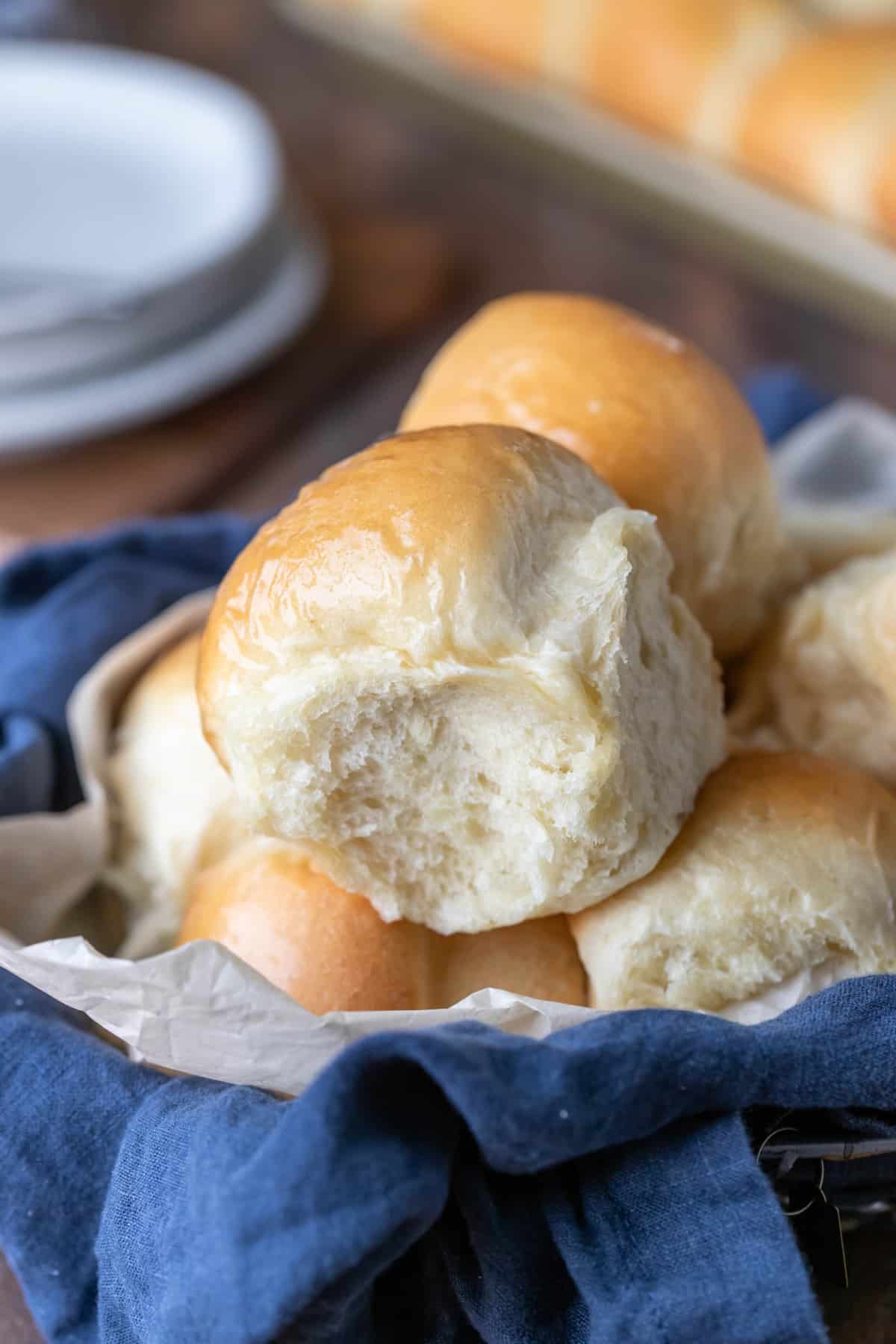
My family can’t get enough homemade bread! Homemade bread is just one of those things that can’t be beat.
The smell of baking bread is enough to bring even my pickiest kid to the table. But a lot of people find working with yeast and making homemade dinner rolls to be intimidating.
So, let’s fix that! I’ve included step-by-step photos, tips, and plenty of notes to help you make amazing dinner rolls.
And the rolls definitely are amazing! They are soft and fluffy, old-fashioned homemade dinner rolls. Give this dinner roll recipe a try, and you’ll find these rolls make a lovely side for weeknight and holiday dinners alike!
“I have made these several times and we love them! I didn’t know it could be so easy and quick to have fresh rolls on the dinner table☺️ my little girls love helping make the rolls too. Delish👍” – Janna
How to make dinner rolls (from scratch)
Here you’ll find step-by-step photos showing how to make this recipe. The full recipe, including ingredients, is given below.
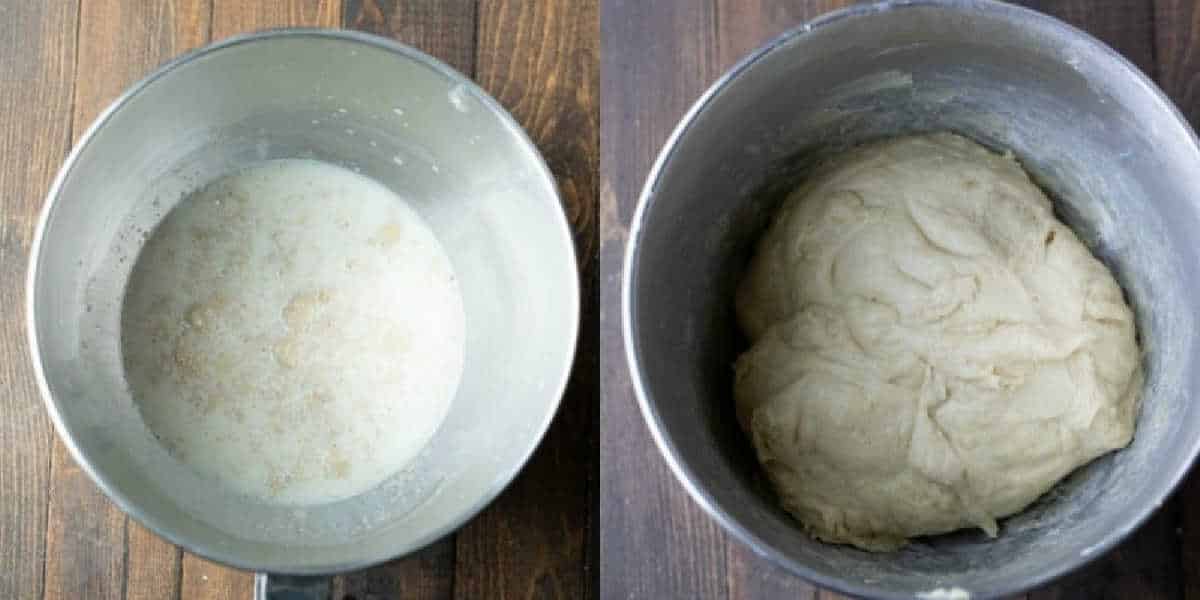
Step 1: Begin by mixing 3 cups of flour, yeast, sugar, salt, milk, butter, and egg in a mixing bowl until combined.
Step 2: Continue adding flour until a soft dough forms.
Step 3: The dough should cling to the dough hook and clear the sides of the bowl, and the dough should feel soft and slightly sticky but shouldn’t come off on your fingers when you pinch it.
Step 4: After kneading, cover the dough and let it rise.
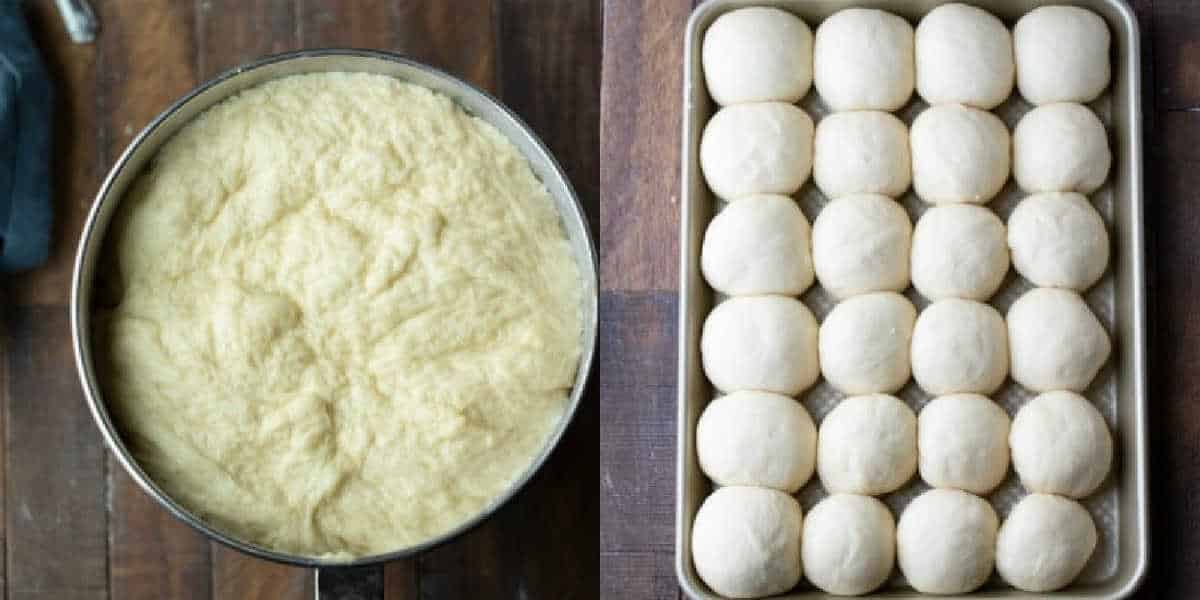
Step 5: After the dough rises, divide the dough into 24 pieces.
Tip >> I divide the dough in half. Then, I divide each half in half to form 4 pieces. I then divide each of the 4 pieces in half again to form 8 equal pieces. Each of those pieces I divide into 3 rolls to form 24 rolls.
Step 6: Place the dough onto the prepared baking sheet. Cover, and let the rolls rise.
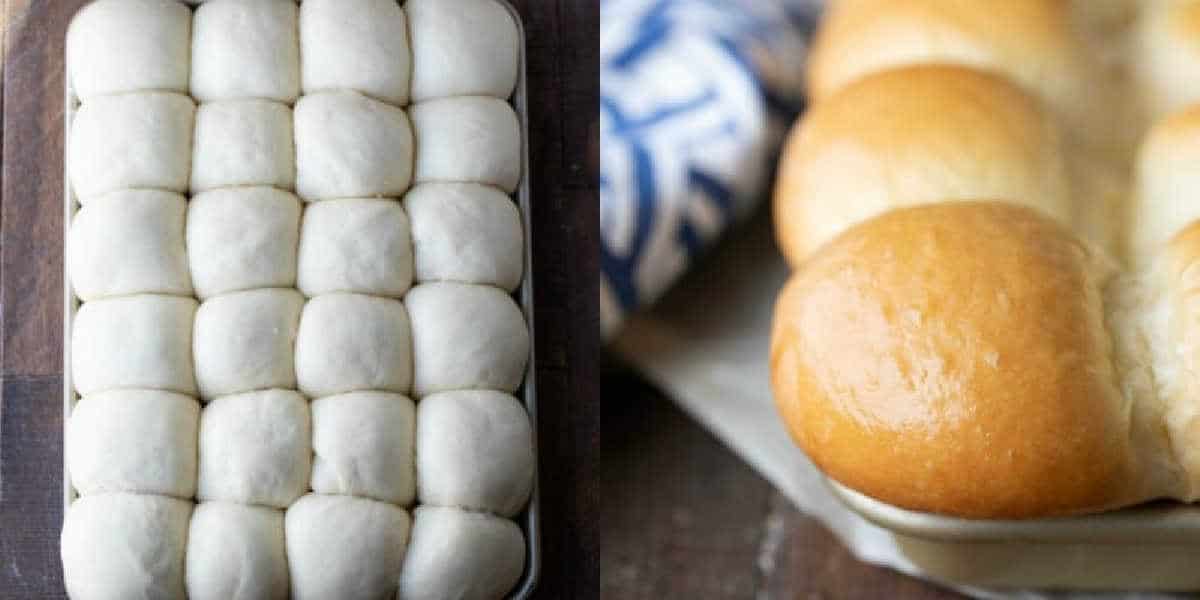
Step 7: Once the rolls have risen the second time, bake the rolls.
Tip >> If the rolls brown too quickly, tent the rolls with aluminum foil.
Step 8: The rolls should be golden brown. Once the rolls have finished baking, brush the hot rolls with melted butter before serving.
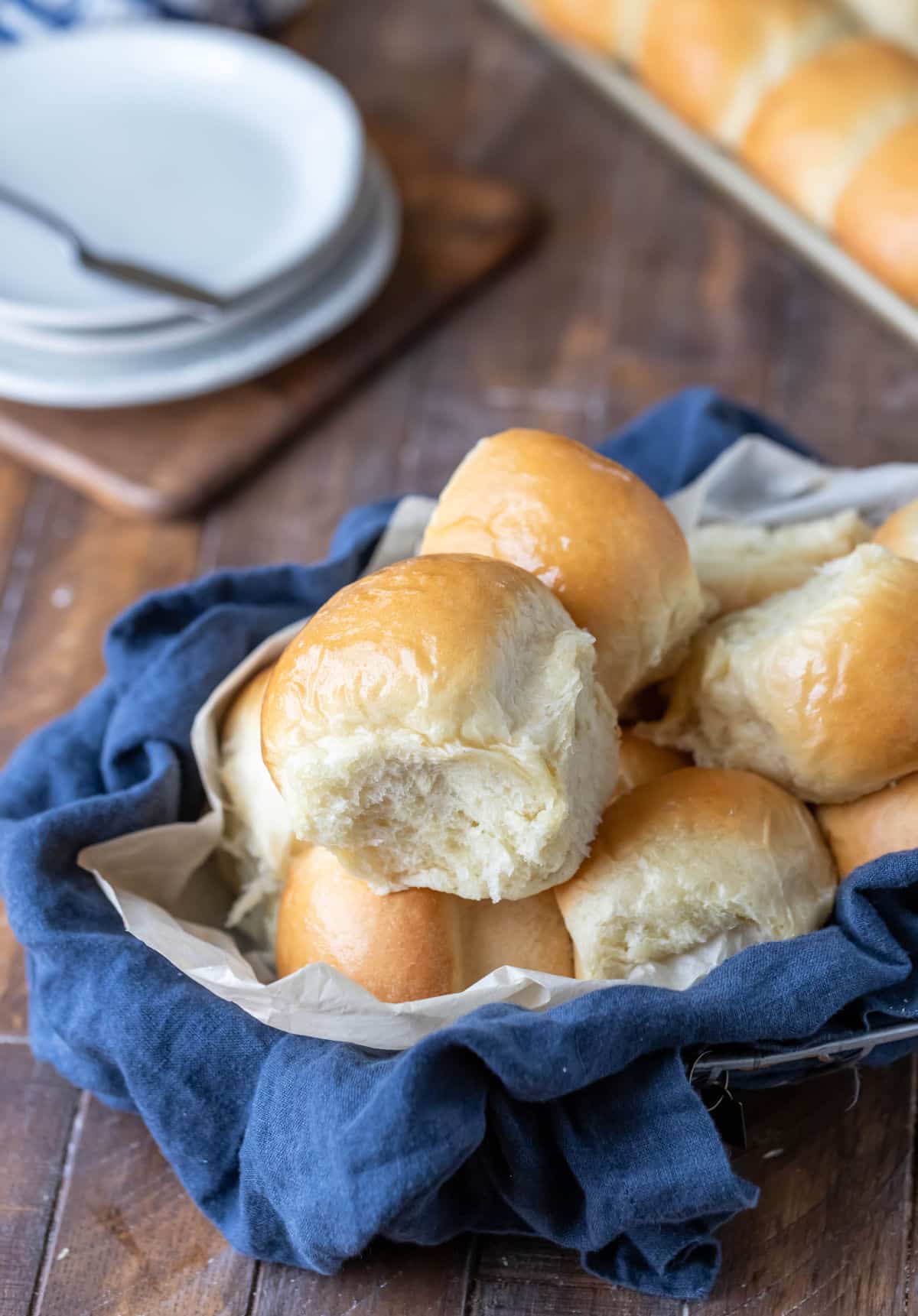
Recipe Tips!
- Temperature: Temperature is important when working with yeast. The milk should be warm, but it shouldn’t be hot. If it’s too hot, it can kill the yeast.
- Using a kitchen thermometer is the best way to check the temperature of the milk. There’re about $10, and you can use a kitchen thermometer for a variety of cooking and baking tasks.
- Butter and eggs: the butter and egg should be at room temperature. Otherwise, if they’re cold, they can bring down the temp of the dough and cause the rolls to rise slowly.
- Yeast: Using fresh yeast is key! Old yeast can lead to a dough that doesn’t rise.
- Flour: A range in flour measurements is given. You only need to use enough flour to form a smooth, slightly sticky dough.
Recipe FAQs
You can make the dough by hand. I recommend adding an additional minute or two to the kneading time if mixing by hand.
You can! If using active dry yeast, combine the yeast, sugar, and warm milk in a small bowl. Let it stand for 5 minutes, or until foamy. If the yeast doesn’t foam, start over, or the rolls won’t rise.
You can! Make the rolls through step 9. Place them in a freezer-safe container, and wrap tightly with plastic wrap. Let the rolls thaw and rise through the second rise before baking. I recommend increasing the amount of yeast by 20% to help with the yeast die-off in the freezer.
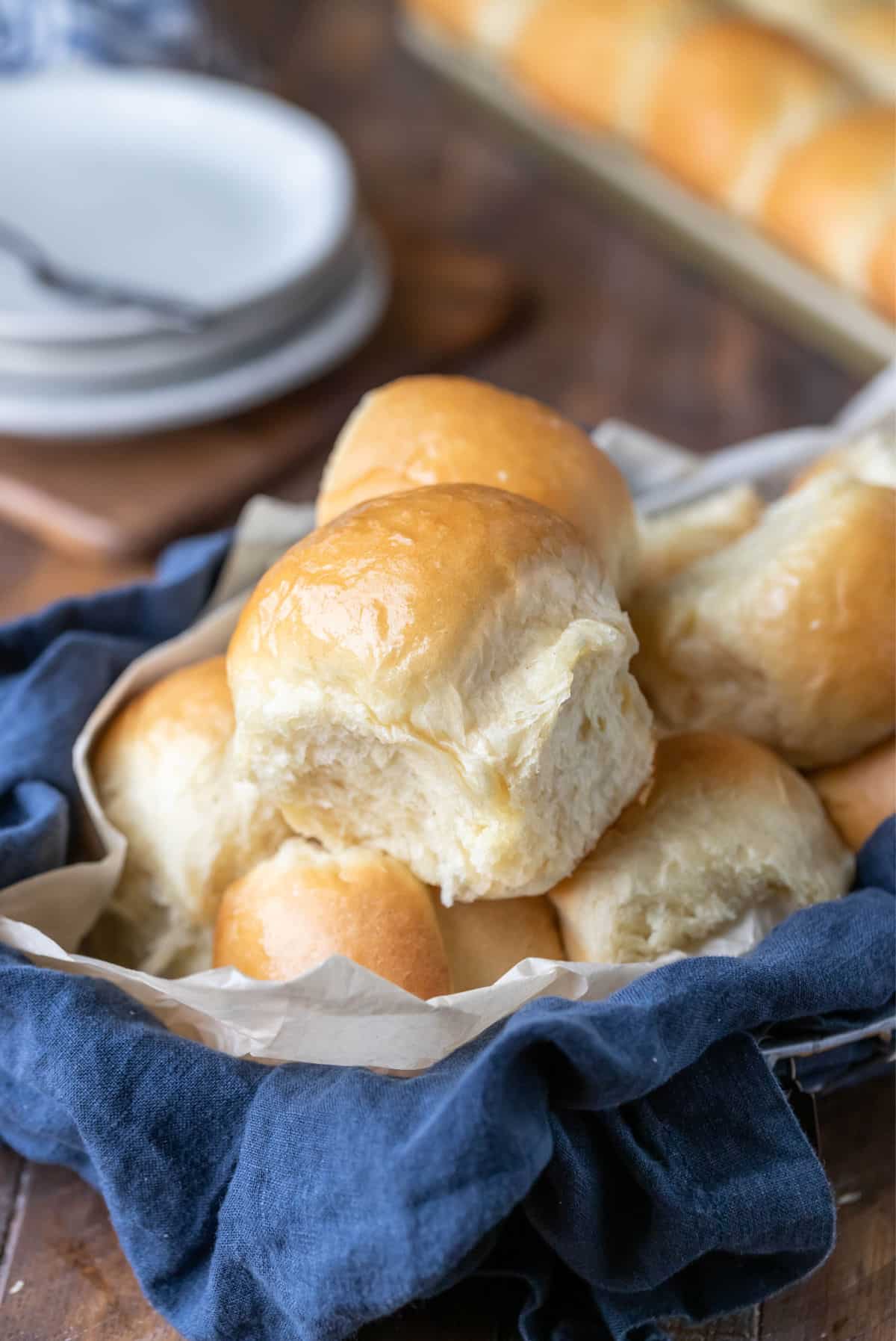
Storage
The dinner rolls should be stored in an airtight container at room temperature. These rolls should keep for up to 3 days.
More dinner roll recipes!
If you’ve tried this dinner roll recipe, don’t forget to rate the recipe and leave me a comment below. I love to hear from people who’ve made my recipes!
You can subscribe to receive my latest recipe newsletters or follow me on Facebook, Instagram and Pinterest for even more delicious food.
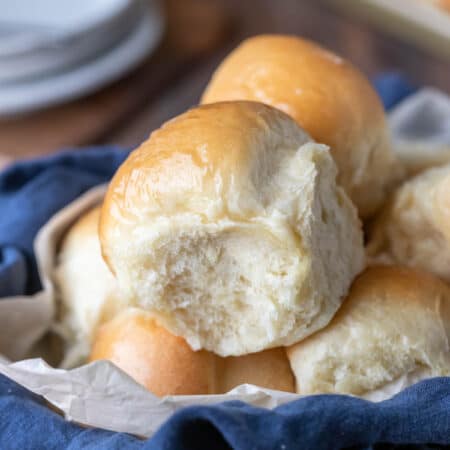

Dinner Rolls
Ingredients
- 4 -5 cups all purpose flour divided
- 2 tablespoons instant yeast
- 1/3 cup granulated sugar
- 1 teaspoon salt
- 1 ½ cups warm milk¹ about 105-110 F
- 6 tablespoons butter at room temperature
- 1 large egg at room temperature
- 2 tablespoons butter melted
Instructions
- Grease a rimmed 9×13-inch baking dish. Set aside.
- Combine 3 cups of flour, yeast, sugar, salt, warm milk, 6 tablespoons butter, and egg in the bowl of a stand mixer.
- Mix on low using the dough hook until the ingredients are combined.
- Continue adding flour, 1/4 cup at a time, until the dough clears the sides of the bowl and clings to the dough hook. The dough should feel smooth and slightly sticky but shouldn’t come off on your fingers if you pinch it.
- Continue to knead on low for 2 minutes.
- Cover the bowl.
- Let the dough rise for 30 minutes in a warm, draft-free spot.
- Uncover, and deflate the dough by punching down.
- Divide dough to form 24 rolls.²
- Place rolls onto prepared baking pan.
- Cover, and let rolls rise for an additional 30 minutes in a warm draft-free place.
- Toward the end of the rising time, preheat oven to 375 F.
- Bake the rolls for 12-15 minutes, or until light golden brown.³
- Remove rolls and brush with the 2 tablespoons melted butter.
Video
Notes
- Anything from skim to whole milk will work. Whole milk will give you a richer roll.
- I divide the dough in half. Then, I divide each half in half to form 4 pieces. I then divide each of the 4 pieces in half again to form 8 equal pieces. Each of those pieces I divide into 3 rolls to form 24 rolls.
- If the rolls are browning too quickly, tent the rolls with foil.
- Nutrition values are estimates.
Nutrition
Did You Make This Recipe?
Share it with me on Instagram @i_heart_eating and follow on Youtube @katedean and Pinterest @katedean for more!
Originally published 4/18/19. This recipe is regularly updated.
Reader Interactions
Love this recipe?
Share your thoughts below and let’s chat! Make sure to connect with me on your favorite social platform below and show me what you made!

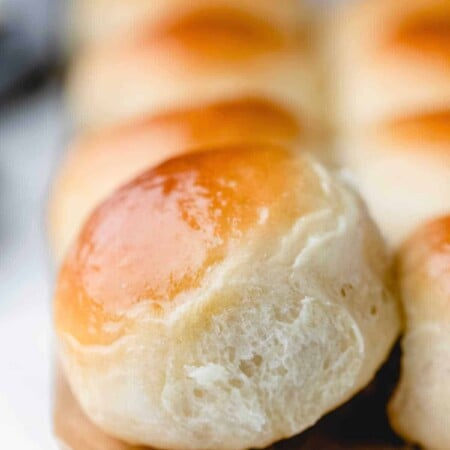
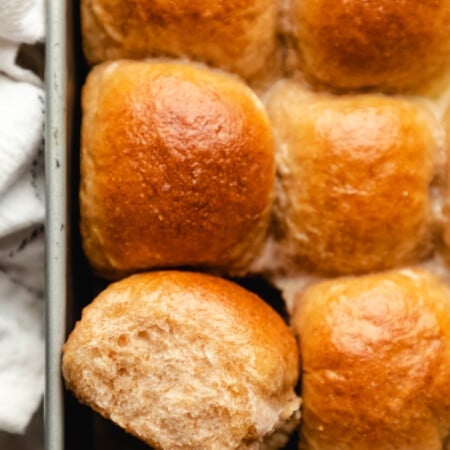
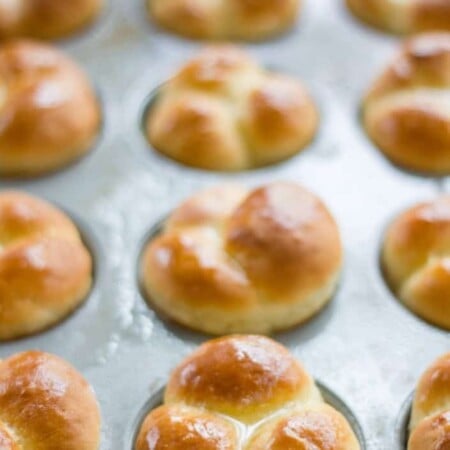
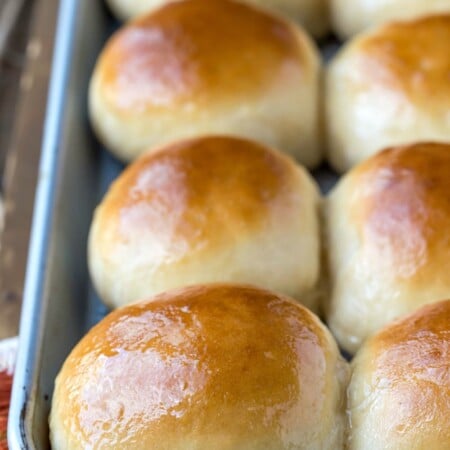










Comments & Reviews
Pamela says
I love this recipe it is so easy and I’m making them again tonight but the only thing I am changing is the sugar I’m using honey instead. Let you know how that tastes. Thank you for a great recipe!!!
Kate says
Thank you!
Sammi says
could I use a 9-inch springform cake pan instead, if I half the recipe?
Kate says
Hi! I would guess that that would work, but I haven’t tried it to say for certain.
Omally says
Perfect
Kate says
Thanks!